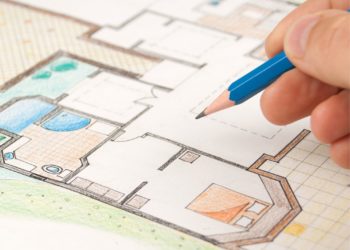What is Vastu Shastra? Posted by Nicole Herbert Dean on Oct 13, 2021 in Culture, Environment
China has its ancient practice प्राचीन प्रथा of Feng Shui. India has the Vastu Shastra.
Origins
The word Vastu – comes from the root word, Vas – meaning to live, dwell, stay or reside. Shastra means teaching or doctrine. So, Vastu Shastra is the science or doctrine of dwelling आवास.
We live most of our lives waking or sleeping in a home. The land, structure, and things inside a home are all subject to energy vibrations. Vastu maintains a balance between positive and negative vibrations by arranging elements and structures in such a way as to attract or repel these energies.
Therefore, the practice of Vastu is said to enhance a positive living experience enabling the family to become prosperous. Vastu maintains harmony by providing balance संतुलन.
In other words, buying or constructing a home is a complicated जटिल process for followers of Vastu. They use careful consideration सोच – विचार for each phase such as choosing a city, the plot direction, the materials, and the colors used.
The principles of Vastu Shastra relate to the obvious ज़ाहिर and hidden छिपा हुआ energy fields in natural and constructed environments वातावरण. Some principles are also natural, such as ventilation, sunlight, etc. Also, it is said that the principles of Vastu utilize the benefits of the abundant प्रचुर energy of the sun in the best possible way.
An example of this is the front door should face east or northeast as the sun rises bringing with it positive energy सकारात्मक ऊर्जा to all who enter a home through the front door. These principles also outline the different colors for each room and who gets to sleep where.
For example, the master bedroom should be occupied by the leader of the home. Not necessarily the oldest person in the home. Therefore if the dad has retired and the son or daughter are the breadwinners कमानेवाला and in charge, they get to occupy the master bedroom. While dad occupies the bedroom facing northeast to encourage spirituality.
According to this principle of design, each plot of land, and construction, whether for business or residence has a central area called the Brahmasthan. This area is the center from which all energies flow. This area must be kept free and be used only for meditation ध्यान and prayer.
Followers of the Vastu Shastra believe that not following the principles of Vastu design will attract negative effects onto the lives and homes of the family. They believe that illness, material loss, death, and other negative experiences नकारात्मक अनुभव occur.
The Benefits of Vastu
Creates financial abundance: Vastu believers affirm that placing the home and office in the right direction with the applicable उपयुक्त colors, artifacts, shelving materials, etc will bring about financial prosperity. Ancient Hindu texts such as the Rigveda and the Manasollasa also detail the placement of people and things to encourage prosperity.
Strengthens relationships: Newlyweds नवविवाहित believers practice Vastu when selecting even the rental they are going to live in before buying a home. Childrens’ rooms are painted a certain color – blue seems to be the choice or calming pastels to encourage positive behavior.
Although Vastu may not be widely followed to the ‘T’, it is gaining more acceptance in this fast-paced, modern world. Just like Feng Shui, many people are using these ancient design principles to enhance their lives.

Build vocabulary, practice pronunciation, and more with Transparent Language Online. Available anytime, anywhere, on any device.





Comments:
Best interior designer in Mumbai:
Thank You very much it was very helpful and very informative at the same time. Very well effort. Do visit this for getting more help. Thanks for the efforts too.